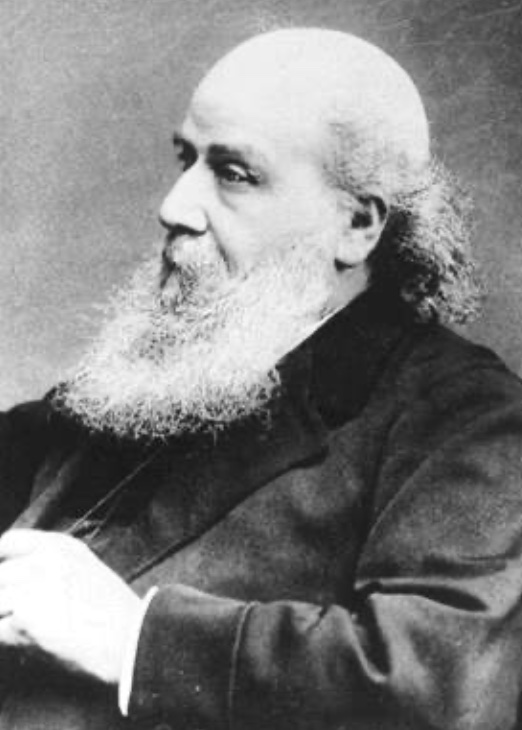
James Joseph Sylvester was born on September 3, 1814, in London, England. He was the son of Abraham Joseph, a merchant, but later would adopt the surname “Sylvester” following the precedent set by his older brother who assumed that name on emigrating to the United States.
At the age of 14, Sylvester enrolled at the University of London where he was a student of Augustus de Morgan. However, after he was accused of stabbing a fellow student with a knife, he was withdrawn him from attendance at that university and subsequently enrolled at the Liverpool Royal Institution. In 1831, at the age of 17, he was accepted to St. John’s College, Cambridge where he studied mathematics under the guidance of John Hymers. In spite of a prolonged illness that interfered with his studies, Sylvester, in 1837, stood second in the famous tripos examination at Cambridge. However, his Jewish religion rendered him unable to accept the doctrine of the Church of England, and he was ineligible to be awarded a degree, the Smith’s prize, or even a Fellowship.
In 1838, Sylvester became professor of natural philosophy (physics) at University College London. By 1841, he had published fifteen papers on fluid dynamics and algebraic equations and been appointed a Fellow of the Royal Society of London. In that year, he also received a BA and MA from Trinity College Dublin, and was hired by the University of Virginia as a professor of mathematics. In less than four months, Sylvester found himself in conflict with a recalcitrant student whose behavior prompted Sylvester to strike him with a cane. Feeling that the administration had not sufficiently disciplined the student for his ongoing misbehavior, Sylvester resigned and moved to New York City where he befriended Harvard mathematician Benjamin Peirce, but after his application for a professorship at Columbia University was denied, he returned to London.
In England, Sylvester found employment at the Equity and Law Life Assurance company where he applied his mathematical insights to the development of actuarial models.. To qualify as CEO for this company, he studied for his bar examinations, and in the process, met British mathematician Arthur Cayley who was also studying law. Hence began a fruitful collaboration that resulted in significant contributions to invariant theory and also matrix theory. In 1851 Sylvester discovered the discriminant of a cubic equation and introduced the term, “discriminant” to describe such expressions. In 1852, he published On the principle of the calculus of forms and in the following year, On the theory of syzygetic relations and two rational integer functions. He also applied his matrix theory to the study higher dimensional geometry, and contributed to the creation of the theory of elementary divisors of lambda matrices.
In 1855, Sylvester was appointed professor of mathematics at the Royal Military Academy, Woolwich, but was forced to retire in 1869 when he reached the mandatory retirement age of 55. For a while, it appeared that Sylvester’s days of mathematical research had come to an end, and then in 1877 he accepted a chair at Johns Hopkins University and founded, in the following year, the American Journal of Mathematics, the first mathematical journal in the United States. In 1883, he returned to England, as Savilian Professor of Geometry at Oxford University–a post he held until his death in 1897.
Sylvester’s work in various branches of mathematics, including algebra, number theory, and combinatorics, had a lasting impact on the development of these fields. His contributions to the theory of matrices and determinants, as well as his work on Diophantine equations and partitions, remain influential in modern mathematics. He is remembered as a pioneering mathematician who made significant advances in diverse areas of mathematics during the 19th century. Expressing his passion for mathematics, he once stated, “Mathematics is the music of reason.”
